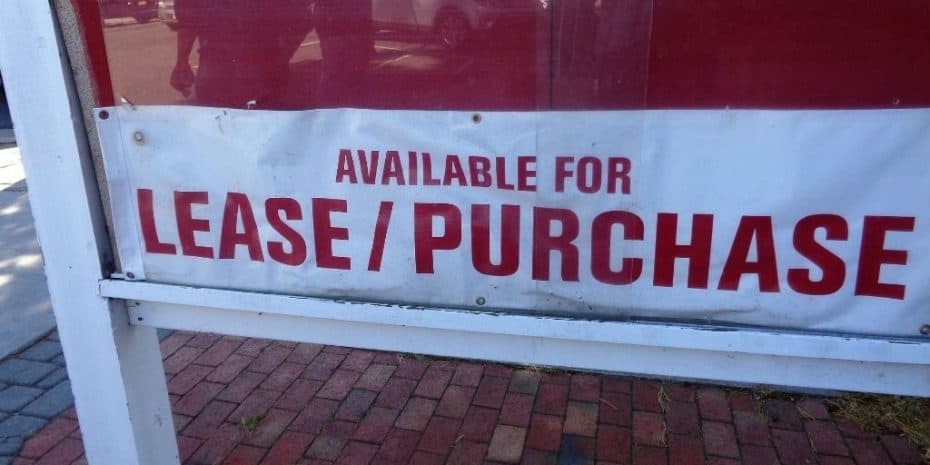What is a Lease Purchase?
REtipster does not provide legal advice. The information in this article can be impacted by many unique variables. Always consult with a qualified legal professional before taking action.
How a Lease Purchase Works
A Lease Purchase Agreement consists of two parts:
- A Lease Agreement
- A Purchase Agreement
This kind of rent-to-own arrangement can be set up as two separate agreements or combined into one.
With a Lease Purchase, the tenant is expected to buy the property at the end of the rental agreement, in accordance with the terms stated in the original purchase agreement.
One easy way to think of a Lease Purchase is like a normal purchase agreement. The tenant is committing to buy the property, but instead of closing the transaction within 30 days, the closing will occur several months or years later, with the tenant-buyer renting the property up until the closing date. If the tenant-buyer does not buy the property, they will most likely lose their earnest deposit, any upfront consideration and/or rent credit they have paid toward the purchase of the property.
Because a Lease Purchase is a literal commitment to buy and sell the property, the landlord-seller could also have grounds to sue the tenant-buyer for failure to perform, depending on the expectations laid out in the original lease-purchase agreement.
It’s also worth noting, the consequences for either party failing to perform is determined by what is written in the original agreement. For instance, in most purchase agreements, a buyer will not lose their earnest deposit if they are unable to obtain financing. However, if they choose to walk away from the deal because they simply changed their mind, they would lose their earnest deposit.
In any case, it underscores the importance of seeking legal counsel and thoroughly understanding what is written in the lease-purchase agreement, so there are no unwanted surprises for either party in the end.
Aside from the high-level concept of how a Lease Purchase works, all of the specific requirements within the agreement(s) can vary depending on what the tenant-buyer and the landlord-seller are willing to accept. Here are some of the more common terms found in many Lease Purchase arrangements.
Term Length: The term length in most Lease Purchase arrangements is between one and five years, depending on what the goals of each party are. If the landlord’s intent is to simply liquidate their property, it’s often in their best interests to make the contract shorter (6 – 12 months), and if the landlord’s intent is to collect more money and cash flow from the property, it may be in their best interests to make the contract longer (3 – 5 years).
Upfront Consideration: In a Lease Purchase arrangement, there is typically an upfront, nonrefundable “consideration” paid by the tenant-buyer to the landlord-seller in return for locking in the price and the terms of the agreement, between 2% and 7% of the price of the home or the equivalent of 3 to 6 months of rent payments.
Earnest Deposit: In a Lease Purchase arrangement, the tenant-buyer and landlord-seller are essentially signing a purchase agreement, which means there is often an earnest deposit required from the buyer and applied to the eventual purchase price. As in most purchase agreements, the earnest deposit is refundable under certain conditions as stated in the agreement (e.g. – if the buyer is unable to secure financing) but is not refundable if the buyer simply has a change of heart and decides to walk away.
Rent Price: In many lease option agreements, the rent price will be above-market (typically 25% higher than comparable rentals in the area).
Purchase Credit: Depending on how the agreement is written, the tenant-buyer can potentially have a portion of their upfront consideration and/or rent payments allocated toward the down payment or purchase price if they choose to buy the home.
Holding Costs: In a lease-purchase agreement, the landlord-seller continues to pay for all holding costs. However, the agreement may be negotiated so that the tenant-buyer pays for repairs, maintenance, and utilities until the title changes hands.
Advantages and Disadvantages for Tenants
Many tenant-buyers enter into a Lease Purchase for similar reasons. Here are some of the most common ones:
- Advantage #1: If a buyer cannot qualify for financing today due to a poor credit score or insufficient income, but they think they will quality before the rental period is over, a Lease Purchase will give them the right to purchase the property after they’ve had a chance to improve their creditworthiness and obtain conventional financing.
- Advantage #2: A Lease Purchase arrangement allows the tenant-buyer to control the property without owning it. Since the tenant is not the owner on title, they are able to avoid some of the additional burdens and expenses that come along with property ownership (i.e. – hazard insurance and liability insurance, property taxes, etc).
- Advantage #3: Depending on how the Lease Purchase Agreement is written, some or all of the tenant-buyer’s upfront consideration and/or rent payments may be allocated toward the down payment or eventual purchase price of the property. This effectively allows the tenant to build equity in the property during the term of their lease, as a sort of ‘forced savings’ mechanism.
There are also some disadvantages for a tenant-buyer in a Lease Purchase arrangement:
- Disadvantage #1: In many Lease Purchase Agreements, the tenant is required to pay money upfront for the right to purchase the property and an above-market rent amount each month during the term of the lease. Unless they can negotiate otherwise, they’ll have to put more money on the line than they would in a normal rental agreement (i.e. – one that does involve renting the property for years before closing).
- Disadvantage #2: Since a Lease Purchase requires the tenant to close on the purchase, it creates more restrictions for the tenant and may end up eliminating some of their options. If they choose not to purchase the property in the end, they’ll lose more money than if they had simply signed a normal lease agreement that didn’t require them to purchase.
- Disadvantage #3: If the value of the property goes down after the tenant signs the initial Lease Purchase Agreement, they will be stuck with an above-market purchase price that they’re obligated to pay unless the original contract gives them to right to revise the purchase price based on an updated appraisal.
While there is certainly a time and place for a tenant/buyer to seriously consider a Lease Purchase, it also puts certain limitations and restrictions in place for both parties.
Advantages and Disadvantages for Landlords
Here are some of the most common reasons why a landlord might pursue a Lease Purchase:
- Advantage #1: In many Lease Purchase arrangements, the landlord is able to collect an above-market rent amount for the duration of the lease term. While a portion of this monthly rent amount may also be applied to the eventual purchase price, it can increase the landlord’s cash flow until the property is sold to the tenant-buyer.
- Advantage #2: In a Lease Purchase arrangement, the tenant is literally committing to purchase the property. This gives the landlord-seller more financial security and certainty about what will most likely happen with the property at the end of the lease term.
- Advantage #3: Most tenants in a Lease Purchase situation tend to take better care of the property during their occupancy because they have the mentality of an owner, rather than a tenant. This bodes well for the landlord, and there is a lower likelihood that the tenant will inflict the same level of wear and tear on the property.
- Advantage #4: While the standards for rent-to-own contracts can vary by state, in many cases, the contract may be negotiated so that the tenant-buyer is responsible for paying the cost of utilities, maintenance, and upkeep, which further improves the landlord-seller’s cash flow and greatly reduces the property management burden.
- Advantage #5: If the tenant does not follow through with purchasing the property, the landlord is able to keep the upfront option consideration and rent payments they collected from the tenant during the term of the lease.
Of course, there are some drawbacks for the landlord-seller as well:
- Disadvantage #1: If the value of the property rises substantially during the term of the lease, the landlord-seller is still obligated to sell the property at the pre-determined price in accordance with the original Lease Purchase Agreement.
- Disadvantage #2: If another buyer comes along during the lease term and offers to buy the property sooner and/or at a higher price, the landlord-seller is still obligated to comply with the original Lease Purchase Agreement.
Overall, a Lease Purchase offers a greater incentive and certainty for the landlord-seller than a Lease Option (which doesn’t obligate the tenant to purchase the property at the end of the lease term), but even so, it’s not always the right fit for every person and situation.
Problems with Lease Purchase Agreements
If someone is planning to participate in a Lease Purchase arrangement (either as a tenant-buyer or a landlord-seller), there are a few things to be aware of:
Unscrupulous Landlords: There have been documented cases of landlords who have taken advantage of their tenant-buyers because of the fact that they can charge above-market rent and keep the upfront consideration. Some landlords might look for any feasible reason to evict their tenant-buyer prior to the end of the lease term. Why? Because if they can regain control of their property, they can find another tenant-buyer who will also pay above-market rent and an upfront consideration. With this in mind, it’s important for any potential tenant-buyer to be aware of their rights and perform in accordance with the Lease Purchase Agreement to avoid any potential loss.
Low Success Rate: Statistically, there are many rent-to-own agreements that don’t result in the tenant buying the property. If a tenant-buyer pursues a Lease Purchase because of their low credit score or insufficient income, there’s a good chance their situation won’t actually improve to the point of getting mortgage approval during the one to five-year term of their lease (even if they think it will).
In other cases, there can be changes in the tenant’s employment or other common reasons for a tenant to move. For many potential reasons, it’s not uncommon for tenant-buyers to be unable or unwilling to purchase the property in the end. Since a Lease Purchase literally requires the tenant to purchase, and it’s difficult to predict real estate deals years into the future, a Lease Purchase isn’t always the most prudent move for every tenant-buyer.
Is a Lease Purchase Right for You?
A Lease Purchase can be a good creative financing solution for some buyers and sellers, but this type of agreement introduces certain complexities and restrictions for both parties that aren’t present in a standalone purchase agreement or a standalone lease agreement.
It’s also helpful to realize, rent-to-own agreements can have significant variations. Most aspects of a Lease Purchase are negotiable, so if you’re considering this type of arrangement as either a landlord-seller or a tenant-buyer, seek legal counsel, make sure the contracts are written in a way that makes sense for you and get educated about any potential consequences of your failure to perform.
Reviewed by Claude Diamond, J.D.






